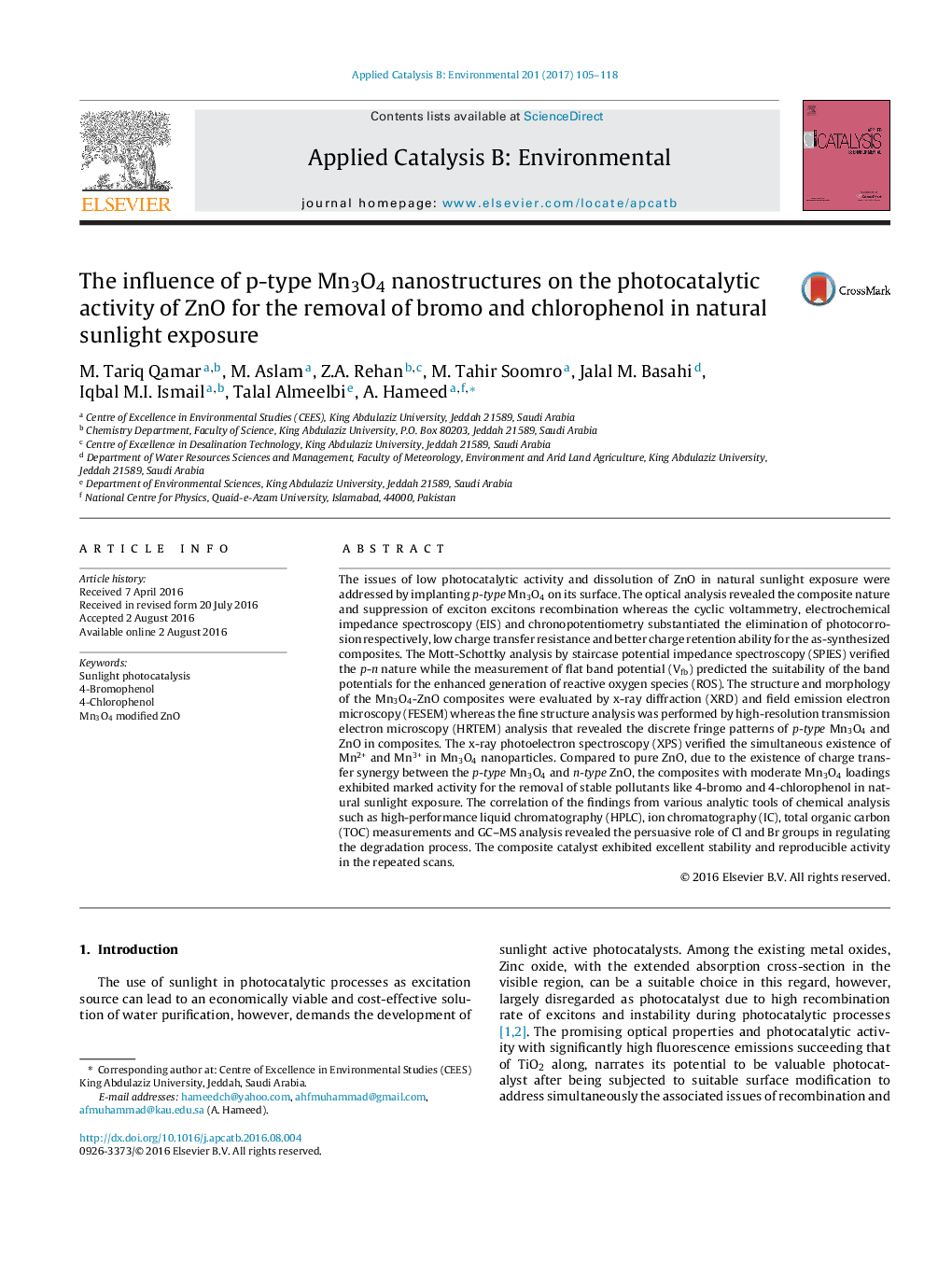| کد مقاله | کد نشریه | سال انتشار | مقاله انگلیسی | نسخه تمام متن |
|---|---|---|---|---|
| 6454950 | 1418819 | 2017 | 14 صفحه PDF | دانلود رایگان |

- Implantation of p-type Mn3O4 on the surface of ZnO enhance the photocatalytic activity in natural sunlight.
- The charge transfer synergy between the p-type Mn3O4 and n-type ZnO conformed the generation of ROS in the system.
- Superoxide anion (O2ââ) radicals are the major contributors in removal process.
- Priority interaction of ROS with the substrates rather than intermediates.
- Clâ and Brâ serves as facilitators in the degradation process.
The issues of low photocatalytic activity and dissolution of ZnO in natural sunlight exposure were addressed by implanting p-type Mn3O4 on its surface. The optical analysis revealed the composite nature and suppression of exciton excitons recombination whereas the cyclic voltammetry, electrochemical impedance spectroscopy (EIS) and chronopotentiometry substantiated the elimination of photocorrosion respectively, low charge transfer resistance and better charge retention ability for the as-synthesized composites. The Mott-Schottky analysis by staircase potential impedance spectroscopy (SPIES) verified the p-n nature while the measurement of flat band potential (Vfb) predicted the suitability of the band potentials for the enhanced generation of reactive oxygen species (ROS). The structure and morphology of the Mn3O4-ZnO composites were evaluated by x-ray diffraction (XRD) and field emission electron microscopy (FESEM) whereas the fine structure analysis was performed by high-resolution transmission electron microscopy (HRTEM) analysis that revealed the discrete fringe patterns of p-type Mn3O4 and ZnO in composites. The x-ray photoelectron spectroscopy (XPS) verified the simultaneous existence of Mn2+ and Mn3+ in Mn3O4 nanoparticles. Compared to pure ZnO, due to the existence of charge transfer synergy between the p-type Mn3O4 and n-type ZnO, the composites with moderate Mn3O4 loadings exhibited marked activity for the removal of stable pollutants like 4-bromo and 4-chlorophenol in natural sunlight exposure. The correlation of the findings from various analytic tools of chemical analysis such as high-performance liquid chromatography (HPLC), ion chromatography (IC), total organic carbon (TOC) measurements and GC-MS analysis revealed the persuasive role of Cl and Br groups in regulating the degradation process. The composite catalyst exhibited excellent stability and reproducible activity in the repeated scans.
127
Journal: Applied Catalysis B: Environmental - Volume 201, February 2017, Pages 105-118